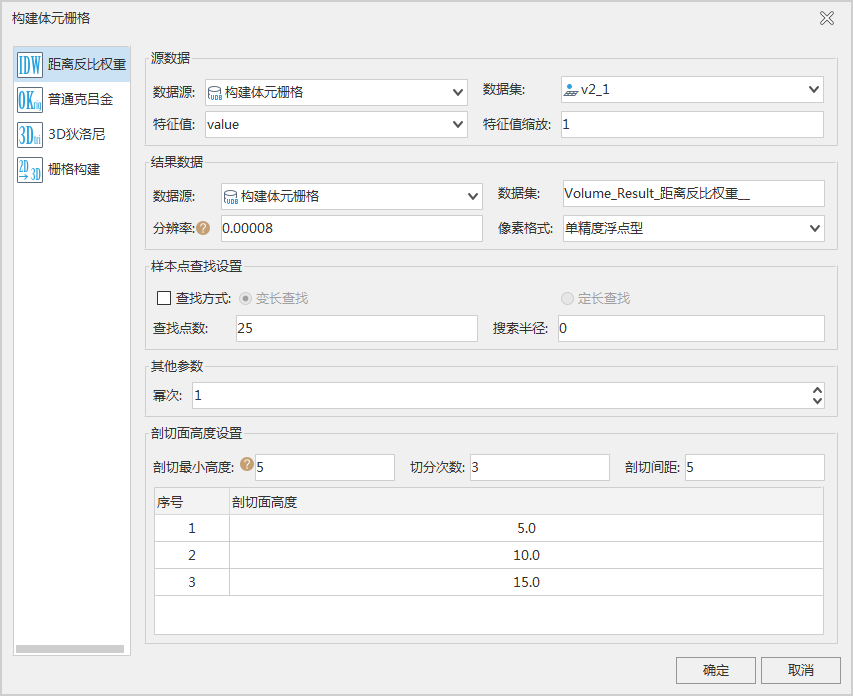Instructions for use
Voxel Grid volume data belongs to raster data. Raster data is organized in the form of grid and uses pixel values of two-dimensional grids to record data. Each grid (cell) represents a pixel element. Grid values can describe various Data Information. Each grid in the Voxel GridVolume Dataset stores the value of the three-dimensional volume data in a slice sampling mode.
Generate 3D Grid has four Building Ways, Inverse Distance Weighting, Ordinary Kriging, 3D Diloni, and Grid interpolation. The first three methods are based on Point Dataset for interpolation generation, while Grid interpolation is based on multiple Raster Dataset
Operation steps
Open the Datasource with the Raster Dataset or 3D Point Dataset at Workspace Manager, on the 3D Data tab, in the 3D Field Data group. Click the Generate 3D Grid button to pop up the Generate 3D Grid dialog box, as shown in the following figure.
 |
| Figure: Generate 3D Grid dialog box |
Description of Building Way
Refer to About interpolation for details about the construction principle of 3D point interpolation of Inverse Distance Weighting and Ordinary Kriging.
- Inverse Distance Weighting : 3D point data is based on the interpolation method of Inverse Distance Weighting Build DatasetVolume
- Ordinary Kriging : 3D Point Dataset interpolates Build DatasetVolume based on the interpolation method of Ordinary Kriging
- 3D Diloni : 3D point data Build TIM (irregular tetrahedral mesh) by 3D Diloni and then Build DatasetVolume by TIM interpolation
- Grid interpolation : Multiple 2D grids are appended in a specified order to construct a Voxel Grid.
Build instructions:
 3D Point Interpolation (Inverse Distance Weighting/Ordinary Kriging)
3D Point Interpolation (Inverse Distance Weighting/Ordinary Kriging)
 Precautions
Precautions
- The "Generate 3D Grid" button in the "3D Data" group can be clicked only when the Datasource contains a Raster Dataset or a 3D Point Dataset. Otherwise, the "Generate 3D Grid" function cannot be triggered.



